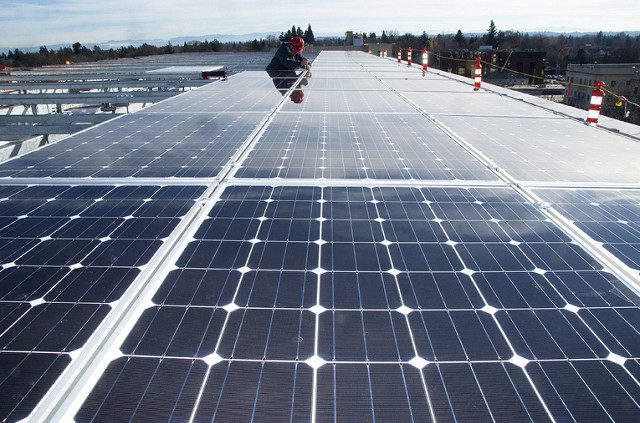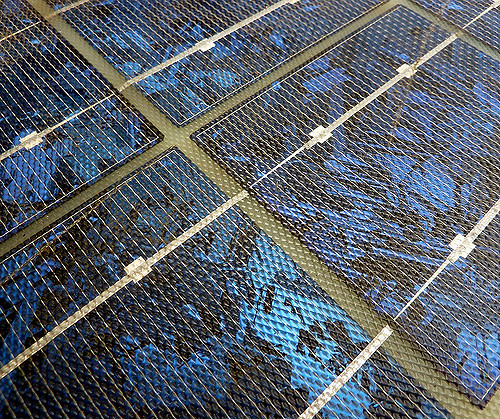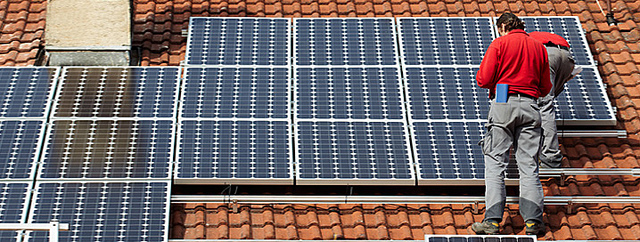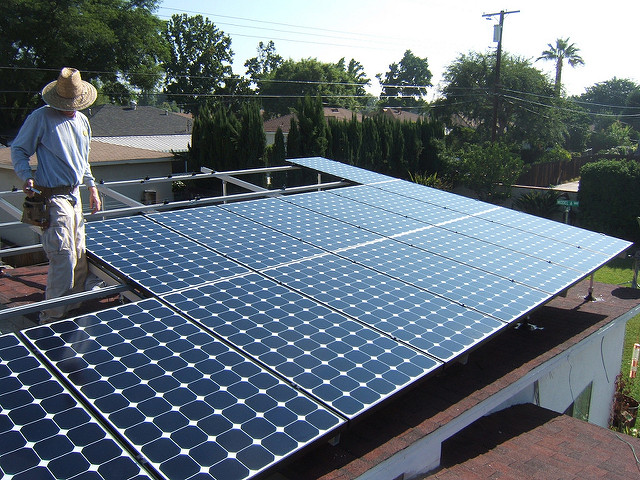
Going green is the way of the future. And renewable energy is at the forefront of the efforts. Solar, wind, geothermal, biomass – all types of renewable energy – all making a tremendous effort to decrease our carbon footprint. And the one that has benefited homeowners the most is solar energy.
What is Solar Energy?
Solar energy, by definition, is the conversion of sunlight into energy. The first successful attempts at converting sunlight into energy started back in the 1970s and we have witnessed exponential growth ever since. Though, it’s safe to say, much of the advancements we’ve seen in this type of renewable energy have happened in just the past decade.
In the most common cases, sunlight is converted into electricity directly through photovoltaic (PV) cells. Photovoltaic cells are critical components in the generation of electricity from sunlight, as they comprise the electricity-generating layers of silicon between solar panels. Called the “photovoltaic effect,” when sunlight hits the PV cells, chemical activity takes place, where the photons of light activate the cell’s electrons to move around and generate energy.

In general, residential solar systems use this method of solar energy generation to convert solar power into electricity needed to power our homes. It is an active form of electricity generation, where mechanical and electrical devices are used to convert sunlight into a usable form of energy. In other, more passive, methods, not common to residential systems, sunlight is stored to distribute the heat of the sun to maintain comfortable living situations (these types of passive systems are more often used for heating and cooling). In this passive method, no mechanical or electrical components are used. Because most homeowners who install residential solar systems in their homes also stay connected to the grid to maintain electricity in their homes when the sun goes down, the use of conversion mechanics is needed to continue to generate electricity within the home.
The Specifics
When sunlight hits the solar panels that you may have installed on your roof (most common) or those mounted in the ground of your residence, the actual conversion that is going on is the conversion of sunlight into DC current. Inverters, which convert DC current into alternating current (AC) is what allows you to use that sunlight to power your home appliances. Solar electricity from the inverter is sent directly to your home’s electrical panel, allowing the energy to power your lights, appliances, computers, and all other electric needs.

When installing residential solar panels, net metering is used to keep track of the amount of energy generated from your solar system, how much is used, and how much is fed back into the grid. Most utility companies will give you a credit for any solar energy fed into their grid (a term called “back feeding”), so in essence, your utility bill could be $0 for any given month, if the amount of energy you use from the grid is less than (or equal to) the amount of solar energy your system has fed into the grid.
Choosing a Home Solar System
Now that you know the basics, all that is left is to choose the type of system you need for your home and get it installed. Although the conversion of sunlight into energy is fairly simple, as is the installation of home solar panels, it can take awhile before you’re up and running. The majority of the reasoning for the wait though is because of certain permits you’ll need to get, scheduling appointments with solar engineers, roofers, the utility company, and installers. Getting everything documented, paperwork filed, and financing set up. When it’s all said and done – the whole process could easily take a couple of months from start to finish. But, when you consider the cost savings over the lifetime of your residential solar system, you won’t mind a few extra months at the beginning. National averages suggest that the amount of utility savings you’ll gain from installing a residential solar system is about $20,000 to $25,000. But, that’s just the national average. In some states, and depending on the climate and utility costs, you can save $50,000 and more over the lifetime of the system. And most home solar systems these days last a good 25 years. Estimates show that your payback period averages about 5 to 10 years, with most seeing a return on investment is about 7 or so years.

Of course, these are all averages and many things can change how much you’ll pay for a system, how much you’ll get back, and how much you’ll save. The average size solar system across America is a 5 kW system, which will average about $12,500 to install. Want the good news? The price of solar panels has dropped drastically over the past five years. In fact, prices from 2015 to 2016 alone have been the lowest the solar market has ever seen.
So, what type of system do you need for your home? Well, how much energy do you use? How much space do you have? Is your roof at the right angle? Will your roof bear the weight of solar panels? How much money do you have to spend? These are all the particulars you’ll need to consider when you’re researching residential solar panels.
Choosing an Installer
When you’re ready to go solar, consider the following checklist when you seek out an installer.

* How reputable is the company you are speaking with? How long have they been installing solar panels? Are they insured and licensed?
* Did the installer physically come out to your home to assess your property, roof, and to consult on how good of a solar candidate you are for the installation of residential solar panels?
* Has the installer monitored your energy usage and made recommendations based on your average energy consumption, current and future needs, and space requirements?
* Does the company mainly deal with solar sales and solar installations or just solar sales? Some companies will try to short change you and get you to sign a contract without ever stepping foot on your property.
* What kind of reviews does the company have? Or, do you know someone who has used this company before? If yes, what does he or she say about the quality of their work.
Remember, this is a long-term investment and it’s something to take seriously. If you’re planning to spend multiple thousands of dollars on a solid residential solar system, make sure you shop around for the best company and one with a good reputation. It’s too much of an investment to glaze over this step of the process.
What Can Affect the Amount of Energy Obtained from the Sun?
Do you live in Seattle, Portland, Chicago? Places like these are known to get less sun than other states. On the contrary, states like Arizona, California, and Florida are known for their abundant amounts of sunshine. Clearly, if you live in a state with more direct hours of sunlight, you’re going to generate more energy off of solar panels.

The time of year can also affect how much energy you’ll get from the sun. During the summer months, when the sun doesn’t set until after 8pm, you’ll harness a lot more energy from the sun compared to those cold, winter months, where it can start getting dark around 5pm.
The size of your residential solar system will also affect the amount of energy that is generated. Along with the type of solar panels that are used. More efficient solar panels will likely generate more energy and take up less space. These types of systems are more costly though. Less efficient systems may be more optimal for your needs though, especially if you have the space for installation of the solar panels.
Financing
As stated previously, the cost of residential solar panel installation has decreased substantially over the past few years. What used to cost $25,000 to $30,000 per unit can now cost more around $10,000. And, a lot of companies are offering $0 down for installation. What does this mean? Residential solar systems are not that far out of reach for the average homeowner. And don’t forget to tack on the added financial incentives, tax breaks, and rebates you are eligible for once you install solar panels in your home. These all drive the costs down and allow more and more homeowners to take part in this type of renewable, clean energy.

Conclusion
Solar energy releases no emissions. The use of solar energy drastically reduces your carbon footprint. And the amount of money you’re paying each month to the utility company. What better way to give back to the earth and your savings account?
The process of converting sunlight into energy is fairly simple. And installation is pretty straightforward. With prices dropping daily, and incentives available for most residential solar system installations, what are you waiting for? Go green and bask in the sunlight.

